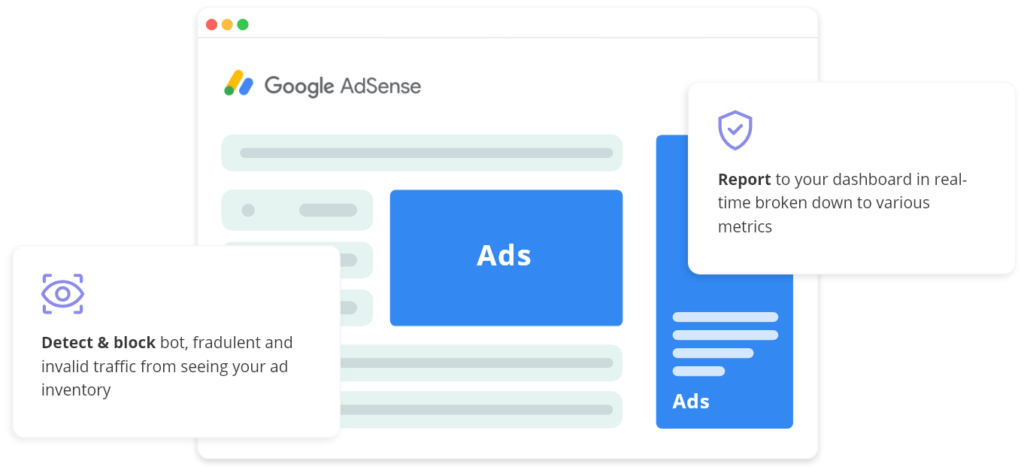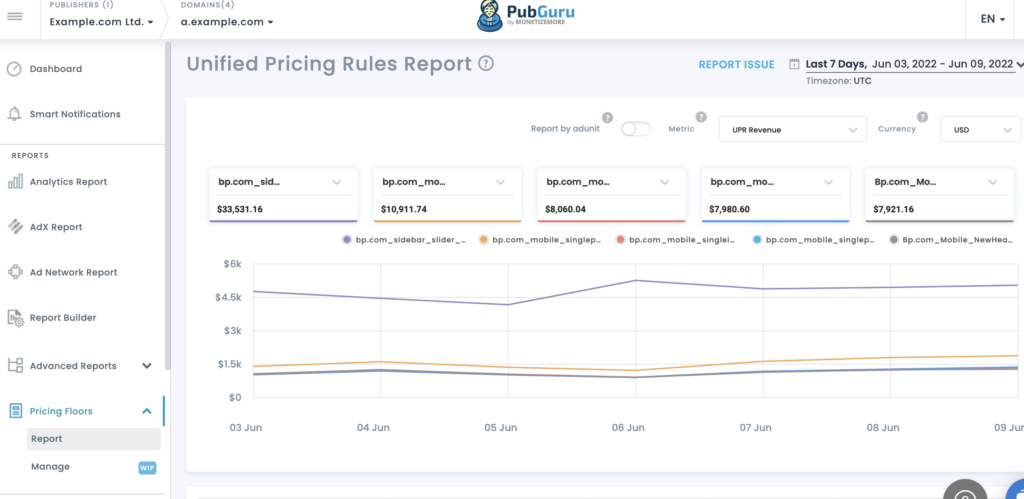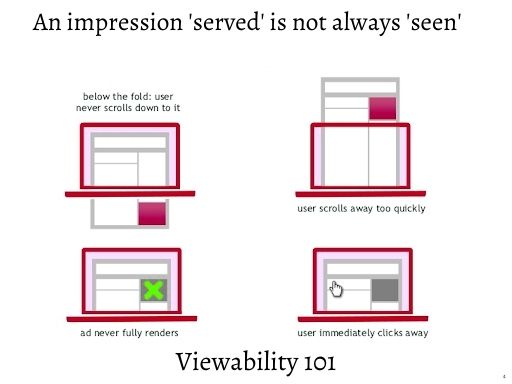Blank ads can be frustrating and confusing for publishers, but they can also have a significant impact on ad revenue. When an ad fails to display properly, it can result in lost impressions, clicks, and conversions. In this post, we’ll explain blank ads and why they matter to publishers. We’ll also cover common causes of blank ads, how to diagnose the problem, and steps you can take to fix it.
Whether you’re a new or experienced publisher, this post will provide valuable insights into how to deal with blank ads and keep your ad revenue on track.
The Cost of Blank Ads: Beyond the Technicalities
Blank ads aren’t just a technical glitch—they have tangible consequences for both your bottom line and your audience’s experience.
Revenue Drain: Every blank ad represents a missed opportunity to generate revenue. When ads fail to load, you lose impressions (the chance for an ad to be seen), clicks (potential traffic to advertisers), and ultimately, the income those actions would have brought. The more frequently blank ads occur, the more substantial the financial impact.
User Frustration: Blank spaces where ads should be can disrupt the visual flow of your content, creating an eyesore for your visitors. This negative experience can lead to frustration and a higher likelihood of users leaving your site altogether.
Eroding Ad Trust: If users constantly encounter blank ads, they’ll start associating your site with broken or unreliable experiences. This erodes their trust in the ads you do manage to show, making them less likely to click or engage, even if the ads are relevant.
Missed Opportunities: Blank ads contribute to lower ad fill rates, meaning a smaller percentage of your available ad inventory is actually generating revenue. This directly translates to missed earning potential and a less efficient monetization strategy.
Blank Ads: Types
Blank ads come in different forms and can appear differently on a publisher’s website. Some common types of blank ads include:
- Completely Blank Ads: These ads are empty and show no content at all. They might appear blank spaces on the page where the ad should be displayed.
- Error Message Ads: These ads display an error message instead of the actual ad content. The error message could be ‘Ad not found‘ or ‘Ad server unavailable.’
- Partially Loaded Ads: These ads appear to be loading but never fully loading, resulting in incomplete or missing content. This can be frustrating for users and can impact ad performance.
- Flashing or Flickering Ads: These ads can distract or even harm users with certain medical conditions. They might flash rapidly or flicker, causing discomfort or seizures.
Understanding the different types of blank ads that can appear on your site is an important step in diagnosing and fixing the problem. Depending on the type of blank ad you encounter, the solution may differ. We’ll cover some common causes of blank ads next.
Blank Ads: Common Causes

Blank ads can be caused by various factors, some of which are more common than others. Here are some of the most common causes of blank ads:
- Ad Blockers: Ad blockers can prevent ads from displaying on a publisher’s website, resulting in blank ad spaces. This can be frustrating for publishers, but it’s also a concern for advertisers who want their ads to be seen by their target audience.
- Slow Internet Connections: If a user’s internet connection is slow or unreliable, ads may fail to load properly. This can result in blank ad spaces or partially loaded ads.
- Incorrect Ad Tags or Settings: If a publisher’s website’s ad tags or settings are incorrect or outdated, this can result in blank ads. Publishers should ensure they have the correct ad tags and settings for each ad placement.
- Ad Server Issues: Ad server issues can also cause blank ads to appear. This can happen if the ad server is experiencing technical difficulties or if there is a problem with the connection between the ad server and the publisher’s website.
- Malware or Viruses: Malware or viruses on a user’s computer can interfere with ad loading and cause blank ad spaces to appear.
Understanding the common causes of blank ads is essential for diagnosing and resolving the issue. By identifying the problem’s cause, publishers can ensure that their ads are displayed properly and that their ad revenue is not impacted.
Phase 1: Diagnose the Blank Ads Issue
If you’re experiencing blank ads on your website, there are a few steps you can take to diagnose the problem. Here are some tips:
- Check for Ad Blockers: The first step in diagnosing the problem is to check for ad blockers. Ask your users if they have any ad blockers enabled, and try disabling your own ad blocker to see if that resolves the issue.
- Review Ad Tags and Settings: Ensure your ad tags and settings are correct and up-to-date. Check to see if any errors or inconsistencies in your ad code could be causing the problem.
- Test the Site on Different Devices and Browsers: Try accessing your site on different devices and browsers to see if the problem is isolated to a particular platform. This can help you identify whether the issue is related to the site itself or the user’s device or browser.
- Check Ad Server Status: If you’re using an ad server, check for any known issues or outages that could be impacting ad delivery.
- Analyze Site Metrics: Analyze your site metrics to see if there are any patterns or trends that could be related to the issue. For example, if you notice that the problem is more prevalent during peak traffic hours, this could indicate a server or bandwidth issue.
- Inspect Browser Console (For Tech-Savvy Users): Look for any errors or warnings in the browser console related to ad loading.
By following these steps, you can narrow down the possible causes of the blank ads and begin to work towards a solution. If you’re still having trouble diagnosing the problem, consider reaching out to us here.
How to fix Blank Ads?
Once you’ve diagnosed the problem and identified the cause of the blank ads, there are several steps you can take to fix the issue. Here are some tips:
- Adjust Ad Settings: If the problem is related to ad tags or settings, make adjustments to ensure the correct settings are in place. This could include updating ad code, adjusting ad placements, or ensuring the correct ad formats are used.
- Ad Blocker Issue: Consider implementing anti-ad-block measures or alternative monetization strategies.
- Malware Issue: Recommend that the affected user run a virus scan and take appropriate security measures.
- Low Bid Density Issue: Explore ways to increase competition for your ad inventory, such as adjusting floor prices or targeting settings.
- Troubleshoot Ad Server Issues: If the issue is related to ad server problems, work with your ad server provider to identify and resolve the issue. This may involve checking server logs, updating software or hardware, or troubleshooting network connectivity issues.
- Work with Ad Partners: If the problem is related to a specific ad partner or network, reach out to them for support. They may be able to identify and resolve the issue on their end or provide guidance on adjusting your ad setup to prevent the issue from recurring.
- Test and Monitor: Once you’ve made changes to your ad setup, test your site thoroughly to ensure the problem has been resolved. Monitor your site metrics to ensure that ad revenue is generated as expected and that users are not experiencing issues.
Advanced Troubleshooting and Prevention Strategies
If the basic fixes haven’t solved your blank ad woes, it’s time to dig deeper and get proactive:
Header Bidding Analytics:
- The Deep Dive: Header bidding analytics can be a goldmine of information. By scrutinizing the data, you can pinpoint specific demand partners whose bids are consistently failing, leading to blank ads. Similarly, you might discover that your price floors (minimum bid requirements) are set too high, deterring advertisers and leaving ad slots unfilled.
- Actionable Insights: Armed with this information, you can adjust your header bidding setup. This might involve removing underperforming demand partners, tweaking floor prices, or renegotiating terms to encourage healthier competition for your inventory.
Ad Quality Monitoring Tools:

- Guardian Angels: These tools act as vigilant guardians, scanning the ads served to your site for any signs of trouble. They can detect malicious code, inappropriate content, or overly intrusive formats that could be causing errors and blank ads.
- Proactive Blocking: By identifying and blocking these problematic ads before they reach your users, you not only prevent blank spaces but also protect your site’s reputation and user experience.
Server-Side Ad Insertion (SSAI):
- The Streamlined Solution: SSAI moves the ad decisioning and insertion process from the user’s browser to your server. This can drastically improve ad delivery speed and reliability, especially on mobile devices with slower connections.
- Fewer Blank Ads: SSAI can mitigate issues like ad blocking and slow page loading, which are common culprits behind blank ads. By ensuring smoother ad delivery, you reduce the chances of empty ad slots.
Creative Optimization:
- Compatibility is Key: Even a beautifully designed ad can become a blank space if it’s not compatible with the user’s device or browser. Make sure your ad creatives are optimized for different screen sizes, operating systems, and browser versions.
- The Lightweight Approach: Heavy ad creatives with large file sizes can take longer to load, increasing the risk of blank ads. Prioritize lightweight, responsive designs that load quickly and adapt seamlessly to different environments.
A/B Testing:
- The Experimentation Mindset: Don’t be afraid to experiment! A/B testing allows you to compare different ad setups, formats, and placements side-by-side to see what resonates best with your audience and generates the highest revenue without sacrificing user experience.
- Data-Driven Decisions: By analyzing the results of your A/B tests, you can make informed decisions about your ad strategy, ensuring you’re constantly optimizing for maximum performance and minimal blank ads.
Dealing with Blank Ads in Programmatic Advertising
Programmatic advertising, while efficient, comes with its own set of challenges when it comes to blank ads. Let’s tackle these head-on:
Troubleshooting SSP and DSP Issues:
When blank ads arise in programmatic, it’s often a joint effort between you (the publisher) and your SSP (Supply-Side Platform) and DSP (Demand-Side Platform) partners.
Start by gathering as much data as possible. Look at reports from your SSP and DSP, noting any error codes, latency issues, or discrepancies in ad delivery.
Reach out to your SSP and DSP representatives, share your data, and clearly explain the blank ad problem you’re facing. They can help you analyze the data, identify potential causes within their systems, and implement solutions.
Issues could range from incorrect targeting parameters and technical glitches on their platforms to bidding discrepancies between your SSP and DSP. Working together, you can troubleshoot and find the root cause.
Optimizing Bid Floors:

Bid floors are the minimum prices you set for your ad inventory. Setting them too high can deter advertisers and lead to unfilled impressions (blank ads). Setting them too low can result in undervalued inventory and lower revenue.
Regularly analyze your fill rates and CPMs (cost per thousand impressions) to understand the relationship between bid floors and ad performance. Experiment with different floor prices to find the sweet spot that maximizes both fill rates and revenue.
Consider using dynamic floors that adjust based on real-time demand, ensuring you’re always getting the best possible price for your inventory without sacrificing fill rates.
Monitoring Viewability:

Just because an ad is served doesn’t mean it’s actually seen. Viewability measures whether an ad is truly visible to the user (e.g., not below the fold or in a background tab).
Some reporting systems might classify non-viewable ads as blank ads, skewing your data. It’s crucial to monitor viewability rates separately to understand the true extent of your blank ad problem.
Implement strategies to improve viewability, such as using sticky ads, lazy loading, or adjusting ad placements to ensure maximum visibility.
Partner with reputable viewability vendors to accurately track and report on viewability metrics, giving you a clearer picture of your ad performance.
What now?
Make sure your ad units always display ads and avoid losing money by partnering with MonetizeMore today! Sign up for a Premium account at MonetizeMore today!
FAQ
How do I know if my site is being affected by blank ads?
You may notice a decrease in ad revenue or click-through rates, or you may receive complaints from users about blank ads.
Can I prevent blank ads from appearing on my site?
To prevent blank ads, ensure that your ad tags and settings are correct, test your site on different devices and browsers, and work with your ad partners to resolve any issues.
How long does it usually take to fix blank ad issues?
The time it takes to fix blank ad issues can vary depending on the cause of the problem. It may take a few hours or several days to fully resolve the issue.
Why am I seeing blank ads on my website?
Blank ads can be caused by a variety of factors, including ad blockers, slow internet connections, incorrect ad tags or settings, and ad server issues.
What impact do blank ads have on my ad revenue?
Blank ads can have a significant impact on ad revenue, as they prevent ads from being displayed to users and can lead to decreased click-through rates and lower revenue.
Can I fix blank ads on my own, or do I need technical support?
Depending on the cause of the blank ads, you may be able to fix the issue on your own by adjusting ad settings or troubleshooting ad server issues. However, in some cases, you may need to seek MonetizeMore’s support to resolve the issue.
Related Reads:
- How to Create Passback URLs With CoffeeCup: 10 Simple Steps
- Easy Steps: Setting Up a 100% Fill Ad Network Behind Ad Exchange
- More Reasons Why Blank Adsense Ads Appear
source https://www.monetizemore.com/blog/why-are-blank-ads-appearing/


0 Comments